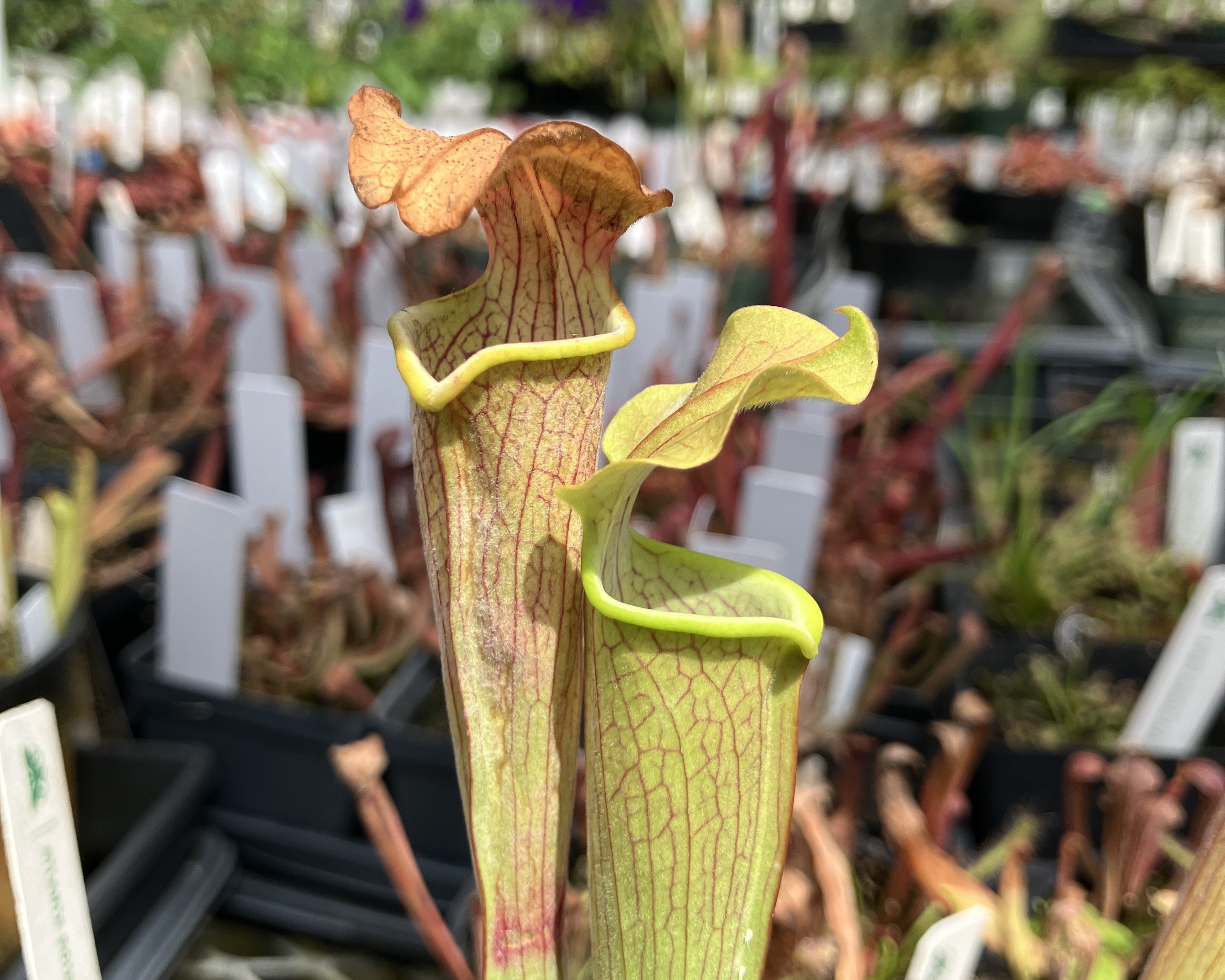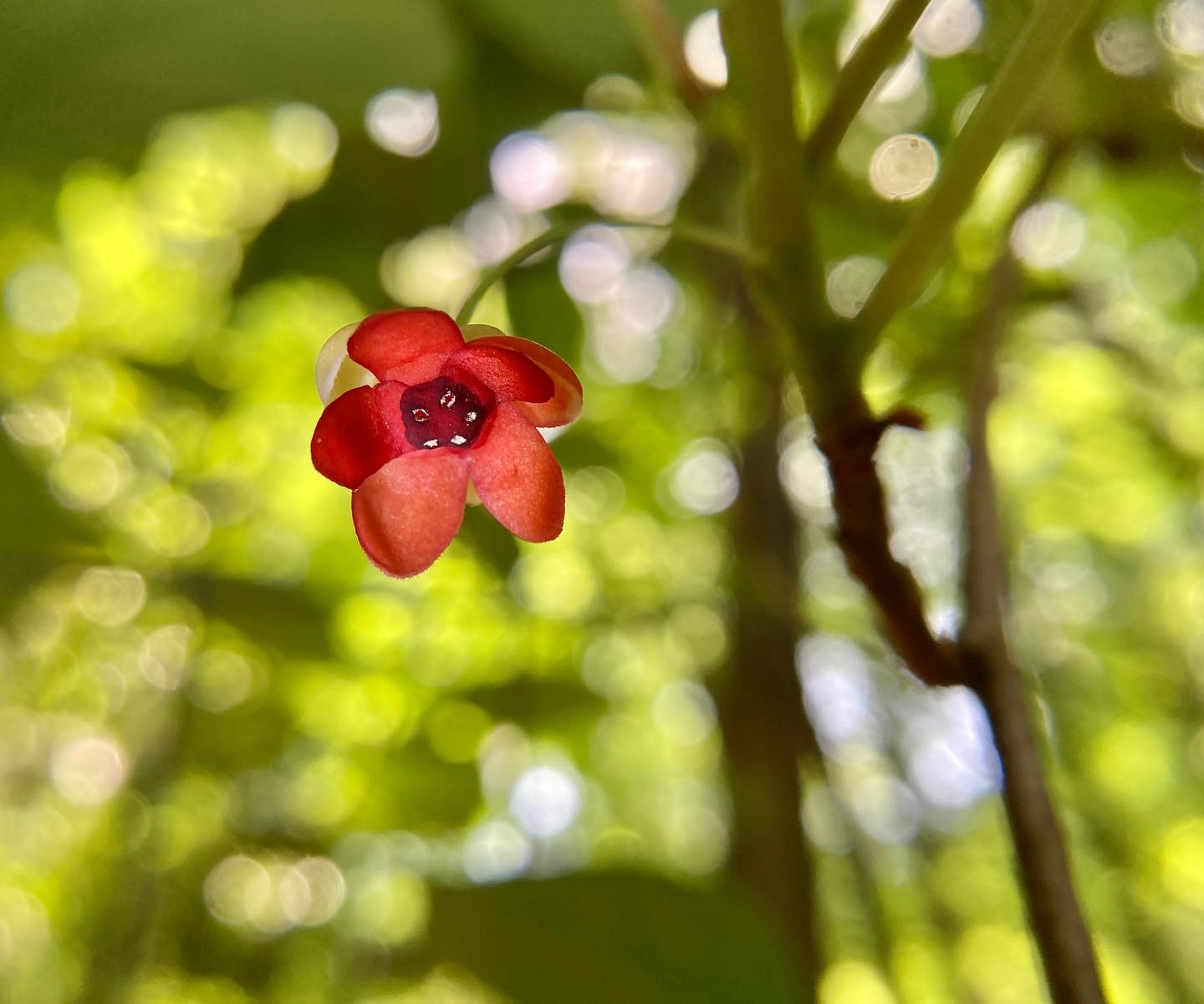Research
Conservation Genetics and Species Delimitation of North American Pitcher Plants in the Sarracenia rubra species complex
Southeastern Center for Conservation / Atlanta Botanical Garden
Advisors: Dr. Lauren Eserman-Campbell, Amanda Carmichael
As a current NSF RaMP Trainee, I am studying species delimitation in the Sarracenia rubra species complex, an taxonomically unresolved group of North American pitcher plants. This group includes three federally-listed Endangered taxa and two subspecies petitioned for listing under the Endangered Species Act. I will be isolating DNA from plants in ABG’s conservation safeguarding collection and local herbaria, then employing whole genome sequencing to study phylogeny and genetic diversity in this complex.
This research is supported by the NSF RaMP Program and the Institute for Museum and Library Services.

Natural History and Conservation of American Starvine (Schisandra glabra)
Dept. of Environmental Sciences / Emory University
Advisors: Carl Brown, Kirk Hines HTR
I am currently working with staff at Emory University and AG Rhodes to digitize a seven-year phenology dataset for American Starvine (Schisandra glabra), an imperiled vine native to the Southeastern US and Hidalgo, Mexico. In addition, I have previously mapped known populations at a field site and developed habitat suitability models for a technical report for resource managers.

Habitat Use and Community Dynamics of the Talladega Seal Salamander (Desmognathus cheaha)
Department of Environmental Sciences / Emory University
Advisor: Dr. Carolyn Keogh
For my Honors Thesis, I am currently conducting a study evaluating the abundance and distribution of the Talladega seal salamander (Desmognathus cheaha) across a series of streams in northeast Atlanta. The primary focus of this project to is to characterize microhabitat use in D, cheaha and explore whether microhabitat partitioning occurs between D. cheaha and other members of the streambank plethodontid assemblage. In addition, I am using both field and raster data to characterize streams and their watersheds, and to explore patterns in D. cheaha abundance, particularly along an urbanizing gradient.
This project is funded by a Lester Grant from Emory’s Department of Environmental Sciences.
Climate Stressors, Ecophysiology, and Farmed Pacific Oysters (Crassostrea gigas)
Northwest Fisheries Science Center / National Marine Fisheries Service / NOAA
Advisors: Dr. Craig Norrie, Dr. Paul McElhany, Dr. Shallin Busch
During the summer of 2023, I worked with the NOAA NWFSC Ocean Acidification Lab and the University of Washington’s School of Aquatic & Fishery Sciences studying spatial variation in the physiology of diploid and triploid Pacific oysters (Crassostrea gigas). I performed respirometry trials on diploid, mated triploid, and chemically-induced triploid oysters that had been outplanted at various locations in the Puget Sound. I also collected environmental data from each site, and used titration and spectrophotometric pH measurements to characterize the carbonate chemistry systems of these areas, to determine the role of environmental variables in stress responses.
My participation in this project was funded by a NOAA Ernest F. Hollings Scholarship.
Heavy Metal Contamination, Urban Streams, and Environmental Justice in Atlanta
Saikawa Laboratory / Department of Environmental Sciences / Emory University
Advisor: Dr. Eri Saikawa
From 2021 to 2022, I worked in Eri Saikawa’s lab on a community-based participatory research project studying residential soil lead contamination and lead poisoning in children. As a part of this project, I participated in soil sampling efforts at participants’ homes within the Westside Atlanta Superfund Site boundary. I also led the processing and analysis of these samples using x-ray fluorescence spectrometry, and managed the disposal of contaminated samples after analysis.
During the summer of 2022, I participated in the Summer Undergraduate Research Experience (SURE)program at Emory to analyze slag and sediment samples from streams in the metro-Atlanta area to identify areas of concern for heavy metal contamination.